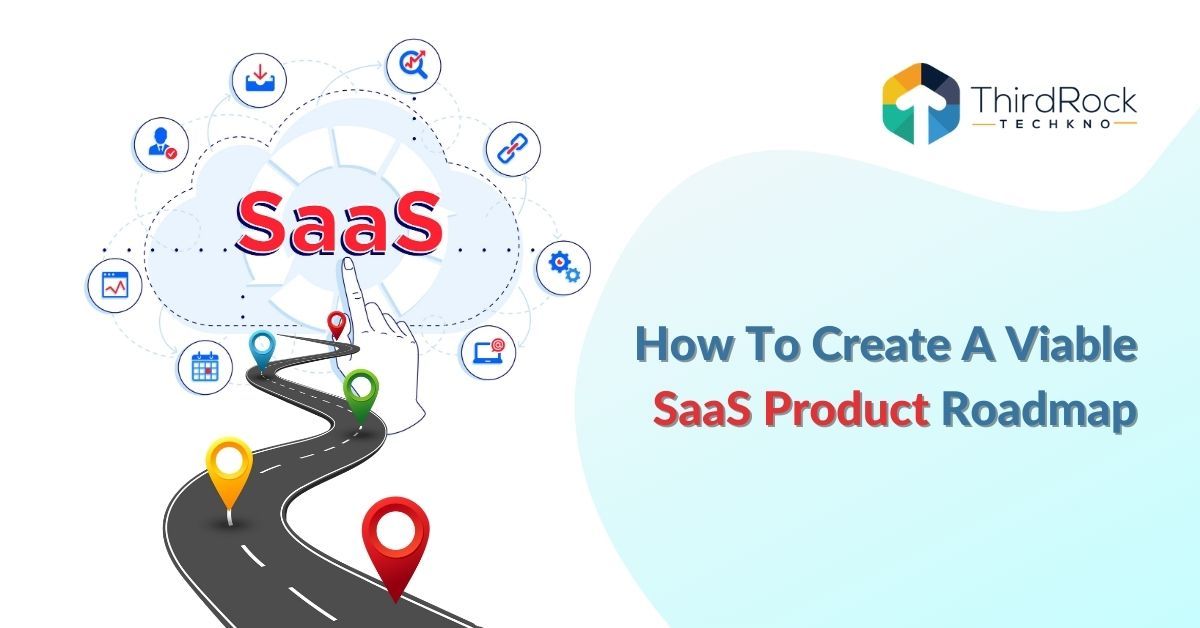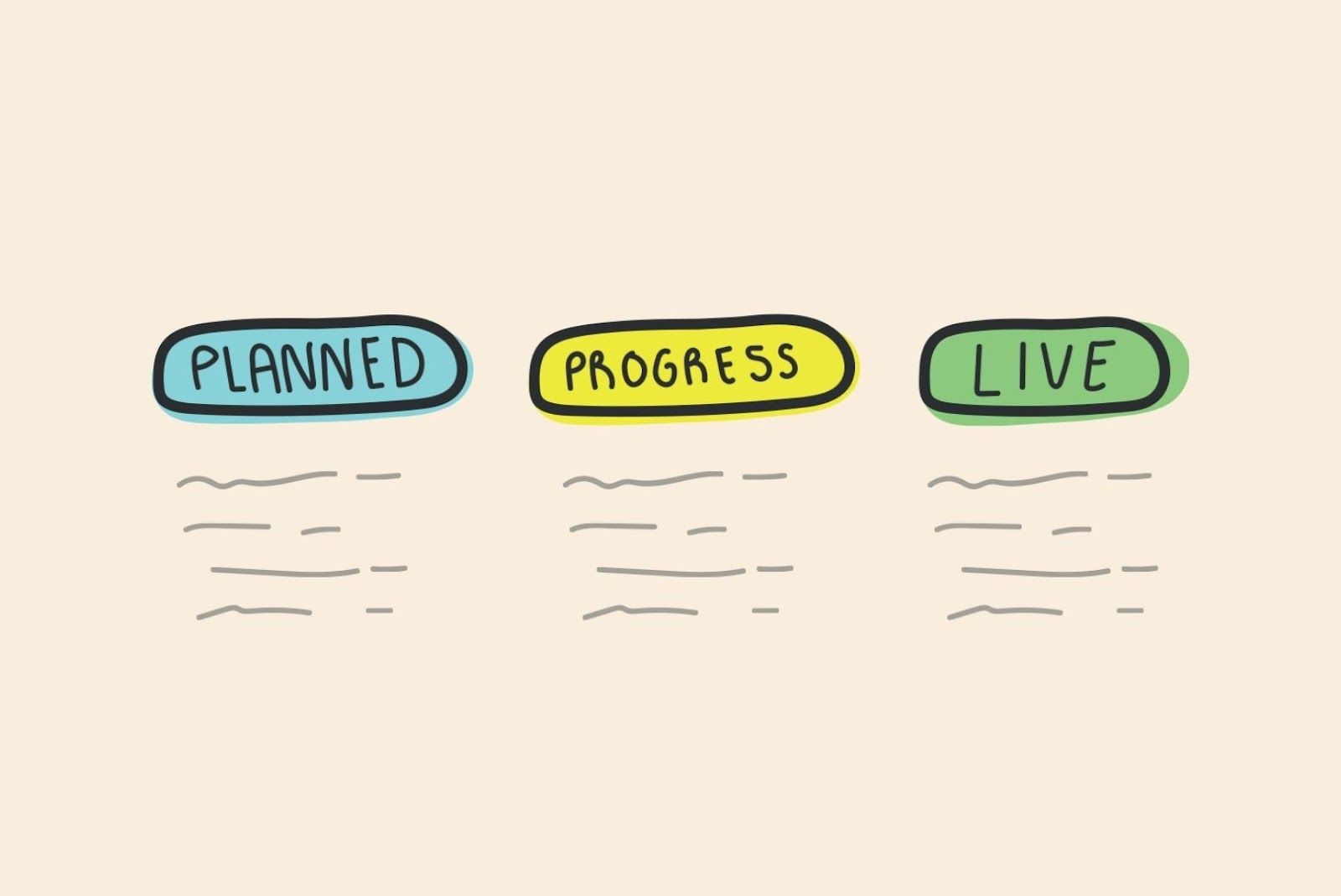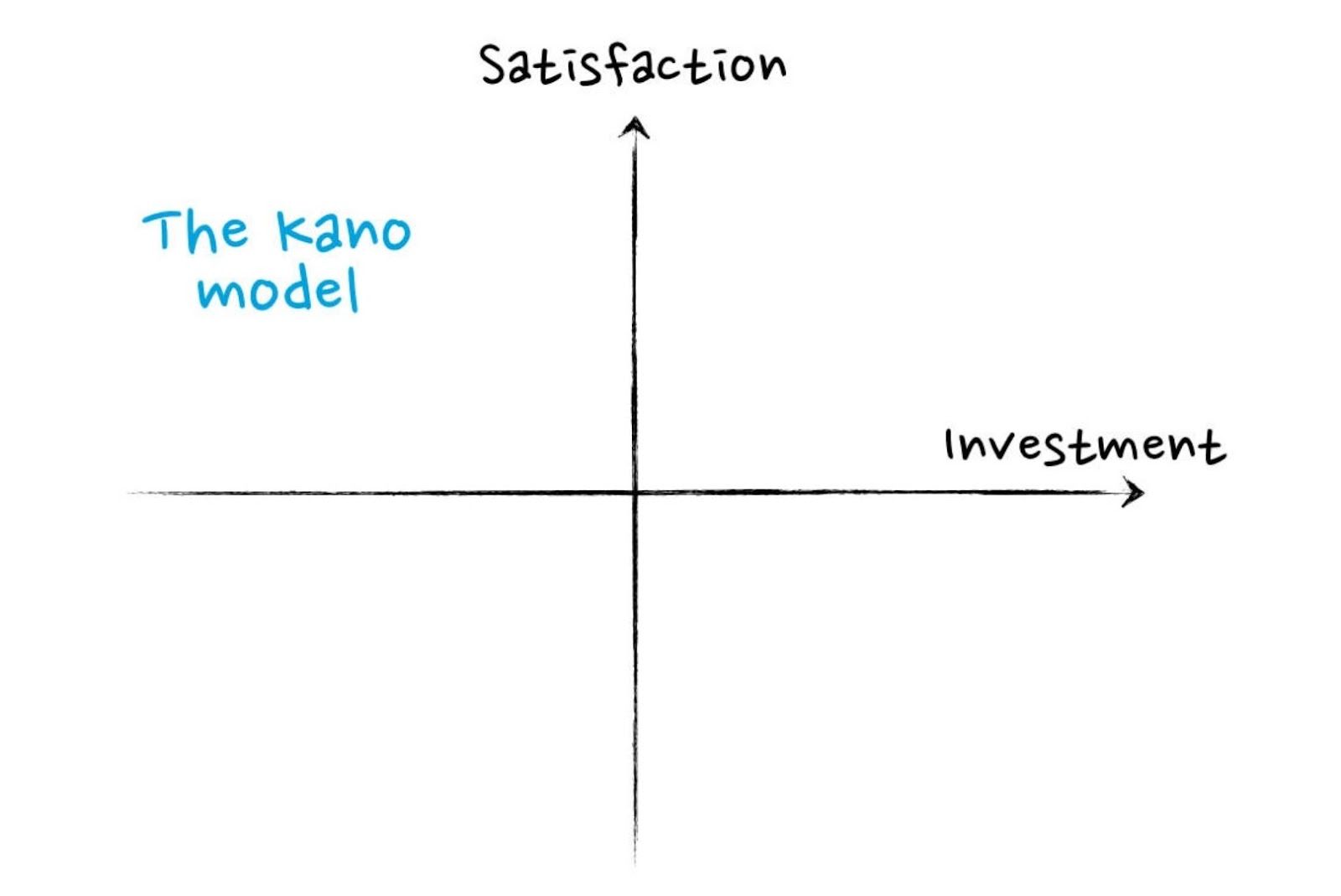
Table of Contents
What is a product roadmap for a SaaS solution, exactly?
Who uses the SaaS product roadmap?
SaaS product roadmap meant for internal users
The product roadmap for C-suite executive
The product roadmap for the development team
The product roadmap for the sales team
SaaS product roadmap for external users
How to create a product roadmap for your SaaS startup
Step 1: Define a product strategy - Product vision and goals
Step 2: Gather inputs from various stakeholders
Step 3: Implement a feature prioritization framework
RICE - Reach, Impact, Confidence, and Effort
Step 3: Set initiatives, budgets, and timeframes for each feature
Step 4: Pick suitable formats to tailor your roadmap for different users
Keep updating your SaaS product roadmap at regular intervals!
By the end of next year, SaaS is expected to cross $141 Bn in revenues globally. As the competition toughens, businesses can’t expect to win the game without a solid product strategy to outperform the competitors. An integral part, or rather a succession to product strategy, is a product roadmap that ensures you are building the right SaaS solution for your audience. In this blog, I’ll take you through the important considerations of how to create a SaaS product roadmap efficiently in order to avoid running out of resources or wasting your time in building the wrong features. So let’s begin by understanding what a SaaS product roadmap is exactly.
Table of Content
- What is a product roadmap for a SaaS solution, exactly?
- Who uses the SaaS product roadmap?
- How to create a product roadmap for your SaaS startup
- RICE - Reach, Impact, Confidence, and Effort
- Keep updating your SaaS product roadmap
What is a product roadmap for a SaaS solution, exactly?

A SaaS product roadmap is a visual representation of how the product will move ahead with its development and enhancements. Therefore, it’s a comprehensive document with different sections for product goals, desired/ planned features in the future, timeframes, and more.
Product managers create a SaaS product roadmap essentially to ensure that the product team doesn’t digress from the core business objectives as they navigate the path of SaaS development.
So a good SaaS product roadmap includes:
- a vision for the product
- a direction towards realizing that vision
- short term and long term priorities for the team
- actual vs expected progress of the product over time
It’s important to note that a product roadmap is an ever-evolving document. As a SaaS expert, you would know that no product is ever launched as its final version. SaaS is all about withstanding and responding to the changing demands with evolving product features.
For that reason, a good SaaS product roadmap is created in a way that it can be updated whenever an unexpected change in the market landscape surfaces.
Who uses the SaaS product roadmap?

Regardless of the team size of your SaaS startup, communicating different things to different relevant audiences becomes a necessity.
For example, you would want to give a detailed product roadmap with all the technical specifications to your development team. On the other hand, your stakeholders and investors need not know these things in detail.
Likewise, your existing and potential customer base would be more interested in knowing what the future of the product holds.
So as a product manager, it’s only wise to create more than one version of your product roadmap.
SaaS product roadmap meant for internal users
It is self-explanatory; these roadmaps are meant for the team members and other internal stakeholders of the SaaS business. The internal users fall into executives, development personnel, and sales/marketing teams.
The product roadmap for C-suite executive
The SaaS product roadmap that you create for executives of your company needs to have more emphasis on the strategic aspects of the product. So this roadmap will include high-level details like the business’s long term goals, how they are molded into short term tasks and how each task is directing the product towards its final destination.
Of course, everything has to be presented in numbers - from metrics to customer feedback and timeframes of product enhancements.
The product roadmap for the development team
The roadmap for the development team is usually very detailed, including the low-level information with technical specifications.
Here, the product manager specifies the features, priorities, themes, design, and other technicalities of the product. The timeframes too are much more specific here, compared to the product roadmap created for the executives.
The goals in this kind of product roadmap are more tactical in nature. They are designed to make way for the strategic goals mentioned in the executive product roadmap.
The product roadmap for the sales team
This is where the product manager ties the monetary goals of the product with its feature-based goals. A product roadmap meant for the sales team focuses on how each feature of the product helps the customer ease their pain points.
The details are here more generic in nature - neither too strategic, nor too technical.
The sales team needs to know just enough to convince their audience of the value and benefits of the product over a period of time.
SaaS product roadmap for external users
External users of the product roadmap could be the investors, existing customers, and potential customers. Some startups also make their roadmap available to the public in general.
You have to be extra careful while preparing a SaaS product roadmap for external users. Not providing enough information runs the risk of losing out on potential customers and giving away too much information may make things easier for your competitors.
So these kinds of product roadmaps are a balanced mixture of strategic plus technical aspects of product development. It’s usually prepared like a presentation. Details about product history, present, and future are crucial here.
The most important part of these product roadmaps is how each feature facilitates concrete value to users and how the costs are being controlled with each advancement.
10 Essential Steps To Build a SaaS MVP
Read MoreHow to create a product roadmap for your SaaS startup

Step 1: Define a product strategy - Product vision and goals
A product roadmap is a goal-driven process so it’s based on a bottom-up approach. You first need to zero in on the final destination and then map out the steps to reach there.
Thus, your product strategy is the foremost factor with the highest bearing on your roadmap will shape up.
As a part of the product strategy, your main task is to outline the business objectives of your SaaS startup. Let’s call it the vision.
Next, you need to determine what kind of results will ultimately bring your product vision to life. These are the goals your product should be able to achieve.
Here’s an example to make things understandable:
If your product vision is to establish your SaaS solution as the best project management tool, your goals will include the market size your product needs to acquire, the yearly revenues that will help your business grow, the brand image your SaaS solution needs to have in the market, etc.
Thus, building a product strategy will provide a concrete answer to the “why” of your product and requires you to:
- Specify a problem your SaaS product will solve
- Define the ideal customer base
- Craft a unique selling proposition of your product
- Outline the long term goals of your business
- Create short term product goals to realize the long term business goals
Step 2: Gather inputs from various stakeholders
Now that you know what you want your product to achieve, it’s time to make an execution plan. At this stage, the product team interacts with other stakeholders to get insights into how to build the product the right way.
For example, the marketing and sales teams can greatly help a product manager understand what’s working well with the customers and what isn’t.
The finance team, on the other hand, will jot down the budgetary constraints for product development. Both the marketing and the finance team can work together to provide you with accurate numbers related to the SaaS product costs, prices, and budgets for promotional activities.
Lastly, it’s your team of engineers who will help determine the technical requirements for the actual development process to begin. Choosing the right platforms, technologies, tools, databases, languages and so much consideration goes into building a SaaS product.
Price Your SaaS Product Right: Saas Pricing Strategies and Models To Use in 2021
Read MoreStep 3: Implement a feature prioritization framework
One of the most challenging responsibilities of a product manager’s role is to juggle between the opinions they sought in step 2 and narrow down on the most important features of the product they are building.
Many managers prefer to go by their intuition and determine the core features based on their own assumptions. However, for a successful SaaS product roadmap, it’s vital that you prioritize the features using scientific, data-driven techniques.
Here are a few feature prioritization techniques that work well for SaaS MVP development:

RICE - Reach, Impact, Confidence, and Effort
Under this feature prioritization framework, you evaluate each feature against four main factors as shown below:

Then, using the following formula, you will arrive at the RICE score of building and implementing a certain feature:

You can run these calculations for the all suggested features for your SaaS product. Then, based on their RICE scores, you can prioritize them for your SaaS product roadmap.
The higher the RICE score of a feature, the more chances it has of delivering the expected results.
Value vs Effort Ratio

As the name suggests, this SaaS feature prioritization technique requires you to measure the value of a feature against the effort it takes to build it.
It may look much simpler than the RICE method because it involves fewer calculations. However, it’s in fact a lot more tricky. That’s because the terms Value and Effort have to be concretely and collectively determined by various stakeholders.
For example, some stakeholders may perceive value as the benefits a feature offers while others may perceive it as the additional revenue it brings on.
On the other hand, developers may view effort as the time taken to build a feature while others may view it as the costs incurred and the complexities of presenting the feature to the audience.
So it’s vital that you and your team clearly specify Value and Effort per your business needs. Then divide the Value facilitated by a product by the Effort put in to build it. This ratio of your Value vs Effort aspects will help you decide which features you should prioritize and which ones can be pushed further.
As a rule of thumb, always focus more on features that provide considerable value with a lower investment of effort, i.e, time and money.
Kano Model

The Kano Model is the most popular technique for feature prioritization, for almost any kind of software. However, it’s a very sophisticated technique involving a lot of effort on gathering and analyzing data.
Under this model, you essentially try to seek answers from your target audience regarding how they see a certain feature - is it a must-have or a nice to have feature? Or are your users indifferent towards it? Is the feature likely to make certain users dislike the product?
Based on the responses, you can evaluate the investment to customer satisfaction ratio for each feature. The higher the ratio, the more important a feature is.
Here’s a detailed guide on how to use the Kano Model in case you want to learn more about it.
Step 3: Set initiatives, budgets, and timeframes for each feature
Now the strategic planning part is over. It’s time to begin the execution planning for your SaaS product roadmap.
Once you know the product goals and the required features, you now have to break them down into initiatives. Initiatives are basically the tasks a business needs to perform in order to build the product with its high priority features.
Ensure that also include the right development metrics against each development task. It’d be a cherry on the cake if you could also manage to include the marketing metrics like customer satisfaction, acquisition rates, conversion rates, etc.
It’s possible that certain features were received in an unexpected manner by the audience or the development took longer than the anticipated time. So constantly measuring the efforts against these metrics will help your team stay cautious and mindful as they navigate the path of prioritizing and developing the product.
Of course, you need to specify the budgets for each task mapped on the product roadmap - design, development, marketing, maintenance all of it.
On top of that, rough timeframes for each stage of product development are also an integral part of a good SaaS product roadmap.
Step 4: Pick suitable formats to tailor your roadmap for different users
Based on the kind of stakeholders you are answerable to, it’s vital that you format your SaaS product roadmap suitably for each group of people.
For example, a theme-based roadmap is more useful for the internal team of executives and a goal-based roadmap is ideal for investors.
For presenting the roadmap to your existing and potential customers, a release-based roadmap is the best fit.
Lastly, a feature-based roadmap is a great choice if you want to build just one version of the product roadmap for your SaaS startup.
Keep updating your SaaS product roadmap at regular intervals!
As I mentioned earlier, a product roadmap is an evolving document, or at least it should be. SaaS is a very volatile industry and businesses are often faced with changing customer expectations and market landscape.
So it’s important to keep confirming you are on the right track by re-evaluating the goals and metrics on your product roadmap.
If you are an early-stage startup, I’d suggest a fortnightly review is necessary until you become confident of the accuracy of your roadmap.
As your product becomes mature, the interval can expand up to 2 months.
If you are a large business with an established product, the frequency of your product roadmap upgrade depends on your internal processes. Unless a major shift occurs in the market, large corporations usually don’t have to make significant changes in their SaaS product roadmap.
Build Your SaaS Product Right
If you have an interesting SaaS idea and want expert advice on creating a quick MVP, we are just a call away.
Sign me up for a free consultation call